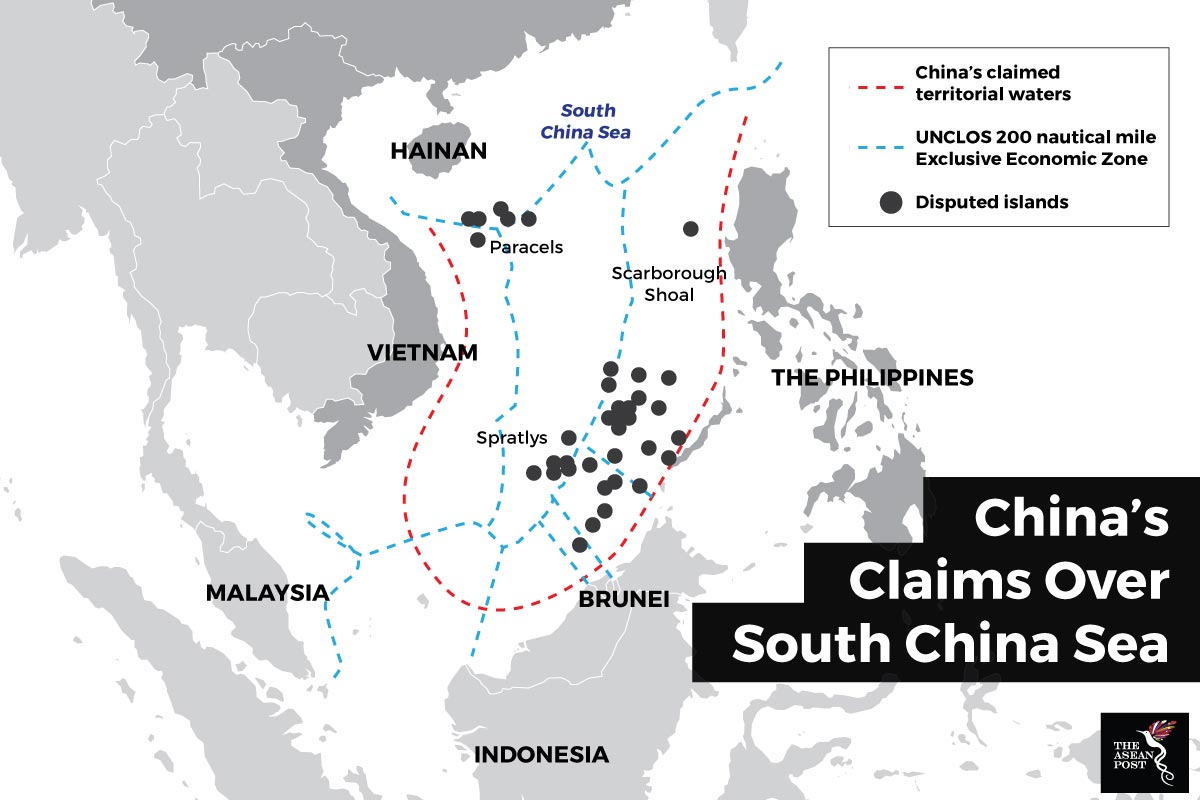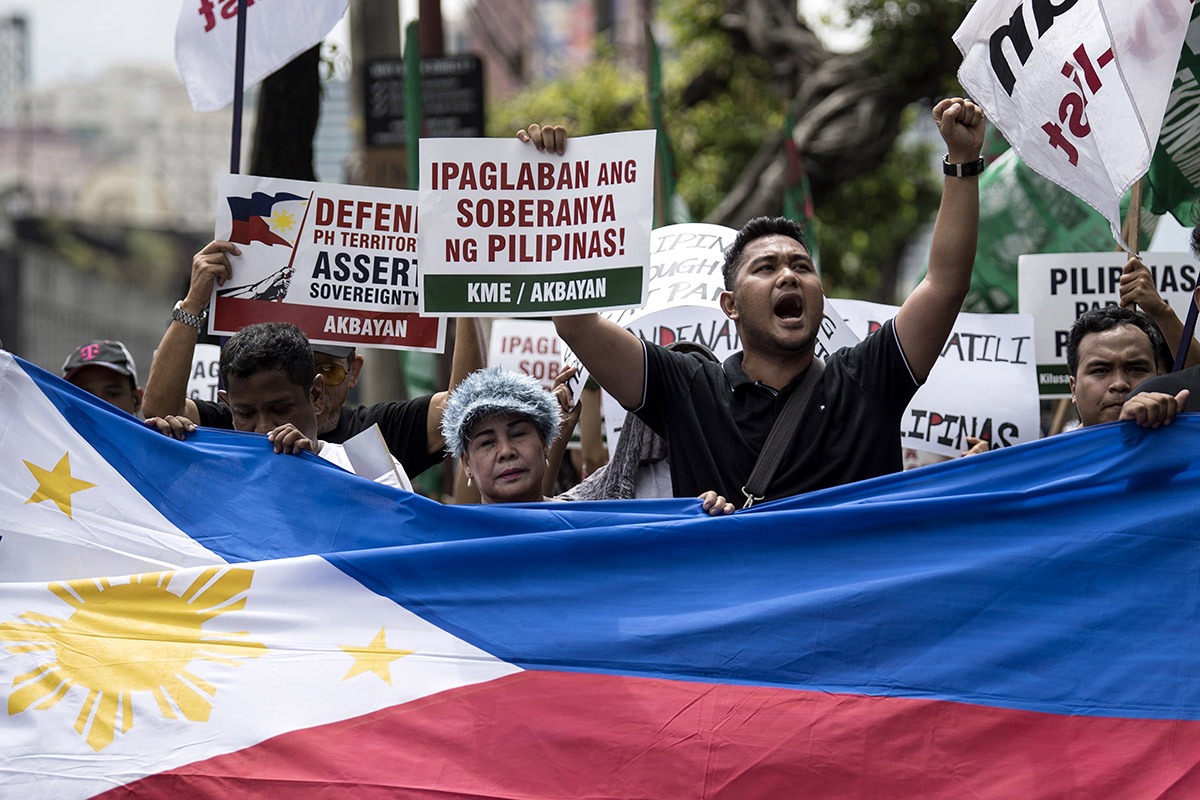Filipino citizens were caught by surprise yesterday as large banners saying “Welcome to the Philippines, Province of China” appeared on bridges throughout Manila and other cities. The banners popped up on the second anniversary of the Philippines’ legal victory against China at the Hague. Images of the banners were widely shared on social media, and the terms "province of China" and "South China Sea" were trending on Twitter.
The banners reveal a common sentiment among many Filipinos – that the Philippines are ceding too much ground to China in the South China Sea despite the ruling favouring them. Many have urged Rodrigo Duterte to take a tougher stance and assert the Philippines’ rights over its territory in the South China Sea.
The Republic of the Philippines vs The People's Republic of China
In 2013, the Philippines formally initiated arbitration proceedings against China. The Philippines argued that China’s historical claim on the territories within the "nine-dash line" was unlawful under the United Nations Convention on the Law of the Sea (UNCLOS). The tribunal under the Permanent Court of Arbitration (PCA) was long and drawn out with China refusing to participate.

Source: UNCLOS & CIA
On 12 July 2016, the tribunal ruled in favour of the Philippines, declaring China’s “claims to historic rights, or other sovereign rights or jurisdiction” related to the “nine-dash line” as unlawful. So much so that China’s activities there actually “exceed the geographic and substantive limits of China’s maritime entitlements”. The ruling also reaffirmed what territories in the South China Sea belong to which Southeast Asian countries. Under UNCLOS, coastal nations are entitled to exclusive 200 nautical mile economic zones from their shore baselines.
Many in the region saw the ruling as a watershed moment which would lead to a decrease in Chinese activities in the waters of the South China Sea.
However, that has not been the case. Despite the ruling, Chinese activity in the South China Sea has remained the same, if not, increased since then. China’s presence there has taken a more aggressive turn as aerial photos have revealed that it has been heavily militarising some islands in the South China Sea. According to the Center for Strategic and International Studies, China is building military bases with runways, aircraft hangars and communications facilities on these islands. For example, Mischief Reef – located 217 kilometres from the Philippines coast – is equipped with a 3,000-metre runway and hangar spaces for combat aircrafts.
Duterte’s pivot to China
The banners on display yesterday in Manila are indicative of Duterte’s relationship with China. Many would expect with the ruling favouring the Philippines and Duterte’s no nonsense style of leadership, the controversial leader would be outspoken against Chinese moves in the South China Sea. Instead, ever since coming into power, Duterte has warmed relations between the two countries.
Duterte’s attitude towards China and its activities in the West Philippines Sea has angered many. A survey by Filipino think tank Stratbase ADR Institute revealed that 73 percent of Filipinos want the Philippine government to assert its sovereignty claims. However, Duterte is unbothered by the outcry. Instead he continues to proceed to hold talks with China to carry out a joint-exploration for oil and gas in two territories in the South China Sea.
Duterte also probably sees China as an essential ally to help him fulfil his “Build! Build! Build!” infrastructure plans. The Build! Build! Build! initiative is estimated to cost the Philippines a massive US$180 billion, with 75 projects planned. Among them including Manila’s first subway system and a 102-kilometre railway in Mindanao. Over the past few years, China has been heavily investing in infrastructure in the region as part of its Belt and Road Initiative (BRI). Duterte needs China’s generosity and deep-pockets if he wants to make his ambitious plans a reality. Therefore, it is unlikely he will do anything to jeopardize his relationship with China over the South China Sea.
The speed of China’s militarisation of the South China Sea over the past two years has been nothing short of alarming. If the Philippines does not assert its sovereignty, it will endanger itself and ultimately the whole of ASEAN too.
